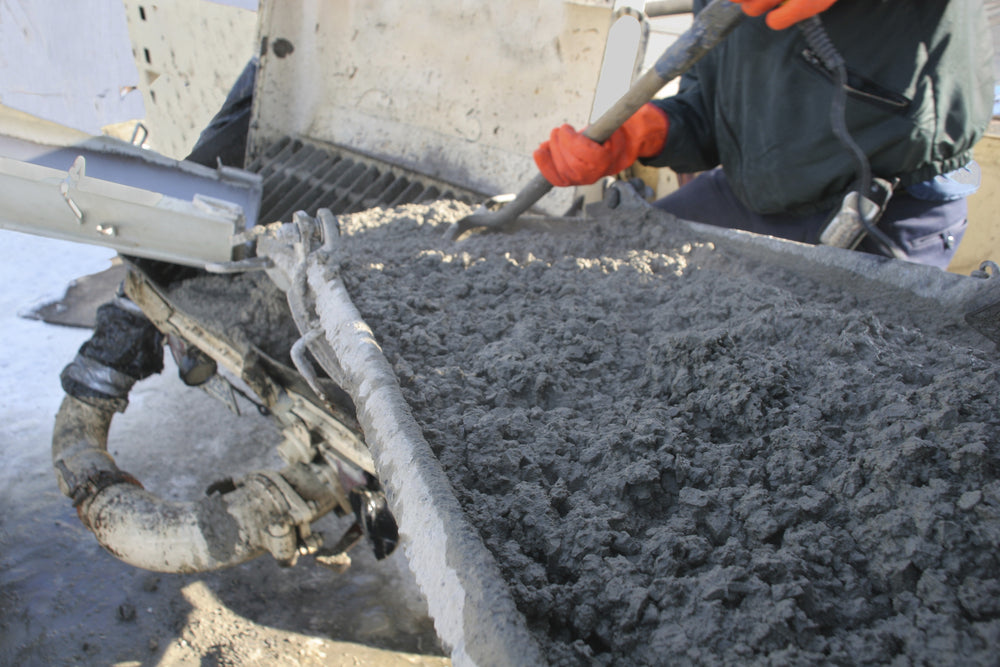Gain access to great benefits like reordering, product lists, new product reminders, and more! SIGN UP TODAY
Gain access to great benefits like reordering, product lists, new product reminders, and more! SIGN UP TODAY
Gain access to great benefits like reordering, product lists, new product reminders, and more! SIGN UP TODAY
Gain access to great benefits like reordering, product lists, new product reminders, and more! SIGN UP TODAY

Concrete is best poured at temperatures between 50 and 60 degrees Fahrenheit. As temperatures get colder, the curing process begins to slow down. At temperatures below 40 degrees, the water in the concrete may begin to freeze. This can lead to long-lasting damage to your concrete. Concrete that is allowed to freeze when it is poured will be much weaker when cured.
Pouring concrete in cold weather can be done, but steps must be taken to ensure that your concrete is kept warm and cured evenly. Whether you're a contractor or someone who is pouring their own concrete as a DIY project, there are several steps you can take to ensure that your concrete is properly cured at the right temperature. By heating up your concrete and then protecting it from the elements, you can successfully pour concrete for your projects.
Winter concrete pouring can be tricky. Air temperature is just one variable to consider when trying to decide when and how to pour concrete. While the air temperature may rise above 40 degrees Fahrenheit, this does not mean that the ground remains unfrozen.
If the ground is frozen when concrete is poured, the concrete will weaken just as if it had been poured in freezing air temperatures. Warm the ground before pouring concrete by laying heating blankets over the area. You can also help heat the ground by placing black plastic over the area a few days before pouring. Give the ground time to warm before pouring concrete.
Other tips for pouring concrete in cold weather:
Preheating materials is one way to help your concrete endure cold temperatures outside without freezing. Heat the sand, water, and gravel before mixing them together. If you're buying ready-mixed concrete from a truck, many plants will do this for you. Typically, the concrete will leave the plant at temperatures of 65 degrees Fahrenheit or warmer. If you're not using concrete from a truck, using hot water and storing the aggregate in a warm location can help as well.
Preparation is important when pouring concrete in cold weather. Warming the aggregate and water is just one thing you can do to ensure that the pouring process goes well.
Some other things you can do to prepare include:
Heated enclosures can help protect your concrete while it's setting. Heated enclosures can be made of wood, polyethylene, or canvas. Some companies sell rigid-plastic enclosures for this purpose. Use electric heaters if possible. You can also use a fuel-burning heater, but if possible, use a heater that funnels warm air into the enclosure while leaving the burner outside.
Keep the concrete warm, over 41 degrees Fahrenheit, for the first 48 hours. If you're using high early-strength concrete that will not be exposed to freeze-thaw cycles, one day at temperatures above 41 degrees Fahrenheit is sufficient. If you're laying a foundation that will bear heavy loads from an early age, the concrete will require 20 days or more at a minimum temperature of 50 degrees Fahrenheit.
Adding extra cement to your concrete can make the mixture warmer. If you need concrete supplies for mixing concrete on a cold day, plan ahead to ensure you have the right ratio of materials for your project. Discount Contractor Supply can help you procure the right materials.
Using an admixture like a chemical accelerant can help your concrete cure more quickly, reducing the length of time your newly poured concrete will need to be kept below 40 degrees Fahrenheit. Chemical accelerant doesn't work well for all projects.
For example, avoid using accelerant for projects with steel rebar embedded in the concrete. Some accelerants can cause the surface of the concrete to become mottled. Know the effects before using an accelerant in your project.
Install windbreaks on your concrete to protect your concrete from cold wind. Frigid wind can cause the temperature of your concrete to drop while increasing evaporation from the concrete surface. If possible, install windbreaks that are six feet tall.
Curing concrete in winter means keeping it protected. Lay down plastic, then use blankets or straws over plastic to keep the slab insulated. Exposing the surface of the concrete too soon after pouring can cause the top layer of concrete to spill. Even concrete that doesn't freeze will still be weaker if the concrete is not sufficiently protected while it's curing.
Cold weather concrete pouring can be tricky. Cold temperatures cause concrete to set slowly and can lead to structural weakness in the finished product. You can find success if you take the If you prepare your workspace appropriately and use the right materials, you can pour concrete in cold weather.